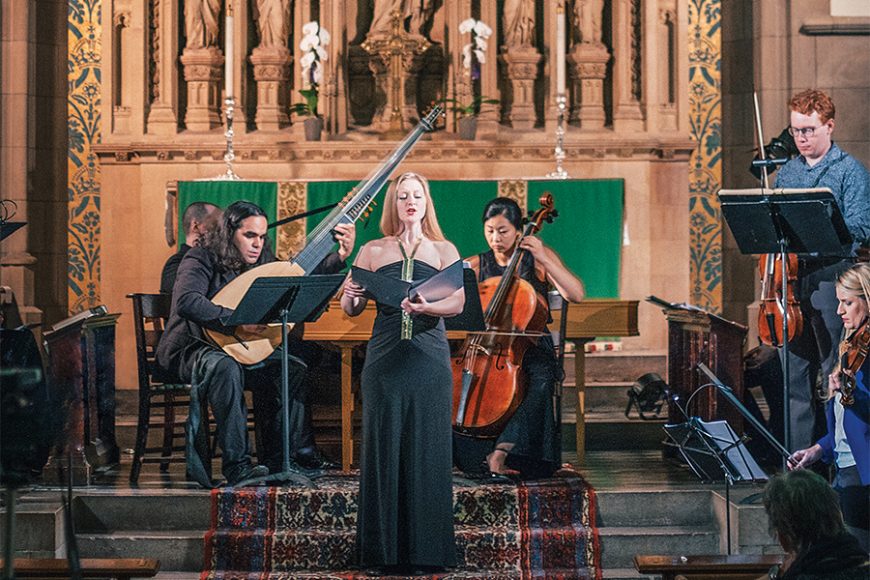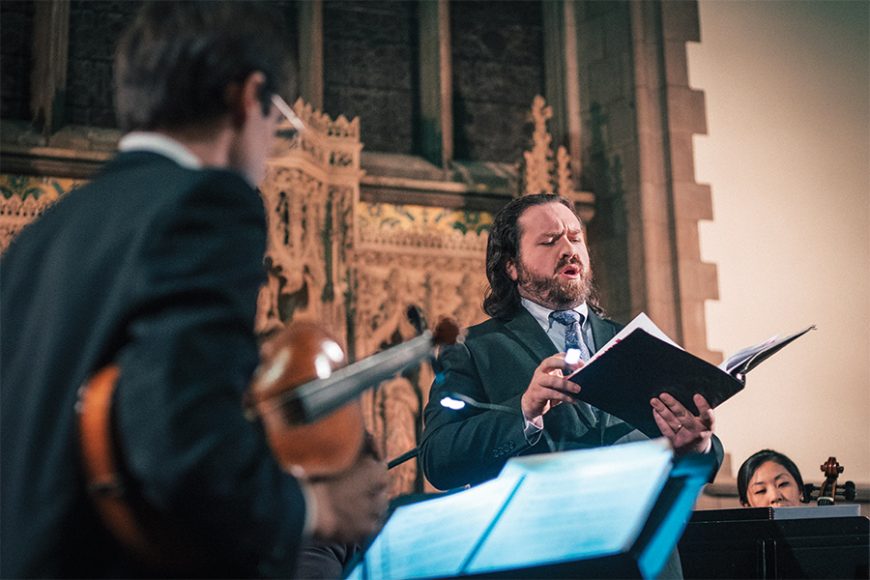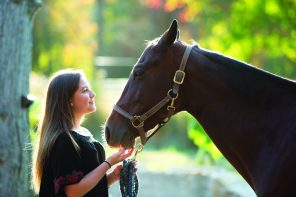Think of Jeremy Rhizor as a musical detective.
His primary case: Bringing little-known classical composers and works out of the past and into the present and future.
About five years ago, Rhizor was reading through oratorios at potluck suppers in New York City.
“Most of the manuscripts we used were available online,” he says. “But we were also making print editions of oratorios that were digitized.”
Apparently, the combination of casseroles and compositions by the likes of Alessandro Scarlatti and Alessandro Stradella worked, because two and a half years ago Rhizor founded the nonprofit Academy of Sacred Drama. The academy now calls White Plains home. The move, he says, “was a personal desire to bring what I’m doing to where I now live.”
His new hometown had a chance to see exactly what he’s doing last month as the academy presented Antonio Gianettini’s “L’huomo in bivio” (“The Man at the Crossroads”) at the White Plains Presbyterian Church.
Antonio, who, you say? It’s a common reaction even among Rhizor’s fellow musicians. Gianettini (1648-1741) was a Venetian opera composer in the service of the duke of Modena. The duke commissioned Gianettini to write oratorios — vocal and orchestral works with literary or religious texts that are presented as concerts rather than staged, although Rhizor plans to restore the gestural elements that were once part of the presentation. “L’huomo in bivio” (1687) tells the allegorical tale of a man struggling with good and evil. Will he listen to his guardian angel or the tempting demon? A narrator completes the quartet of singers, which also doubles as the sometimes angelic, sometimes demonic chorus.
In the November performances, the singers were accompanied by an ensemble of academy instrumentalists under the direction of Rhizor, a violinist. (Usually in performances of Baroque music, the instrumentalists are led by the harpsichordist, who provides the baseline and harmonies known as the basso continuo.)
The academy will follow “L’huomo in bivio” with Gianettini’s 1690 oratorio “La vittima d’amore, osia La morte di Cristo” (“The Victim of Love”), a different take on Jesus’ Crucifixion that finds his mother, Mary, and beloved disciple John at the foot of his cross, each vying to take his place. This meditation on suffering and martyrdom — which grew out of the exile of England’s Roman Catholic king James II and his wife, Maria Beatrice, the duke’s sister — will be performed Feb. 21 at St. Mary’s Church in Norwalk.
“La vittima d’amore” and “L’huomo in bivio” belong to an era, the Baroque (late 16th- through mid-18th centuries), that swept through the arts with grandeur, majesty, passion and ornamentation. It marked the beginning of classical music, with a small “c,” as we know it after the metrically free, modal works of the Middle Ages and the Renaissance. In contrast, Baroque music had major and minor keys, delineated by key signatures, and regular rhythms denoted by time signatures.
“That’s true, largely due to the invention of opera and oratorio, which codified music,” Rhizor says.
And though the Baroque ensemble was smaller than what we think of as an orchestra today, “there were some larger ensembles and, in some cases, larger string sections,” Rhizor says, as violin makers like Antonio Stradivari and Giuseppe Guarneri took the instrument to new technical heights.
There are other decided musical differences between the Baroque and our own time. Whereas women were beginning to make their way onto stages in the Baroque, the female roles were still often performed by castrati. (Today, the title roles of “La vittima d’amore” and “L’uomo in bivio” are sung by natural countertenors — the male equivalent of a female contralto or mezzo-soprano.)
The instrumentation is also different, with the harpsichord and cello-like viola da gamba among the key elements.
It was the particular traditions of the Baroque — “the way a community of thought built up around historical practices” — that drew Rhizor to the era when he was a college student at the Eastman School of Music in Rochester.
Not only were there manuscripts, but treatises telling you how to perform this music, Rhizor says. The academy pays that scholarship forward with articles and lectures on performance practice and history as well as translations of texts that are drawn from the Judeo-Christian traditions with influences from classical mythology as well.
Such works offer a bridge and a distant mirror, he adds.
“When we look at what a past age is doing, it gives us clues into how they thought about themselves. We get to see these stories in a new light” — and ourselves, he adds, in the process.
The Academy of Sacred Drama performs “La vittima d’amore” at 7 p.m. Feb. 21 at St. Mary’s Church, 669 West Ave., Norwalk, and at 4 p.m. Feb. 23 at Corpus Christi Church, 529 W. 121st St., Manhattan.
Jeremy Rhizor will be in concert May 15 at White Plains Presbyterian Church and May 16 at The Chapel at St. George’s Episcopal Church in Manhattan.
Tickets are $45 and $25 for the Westchester and Fairfield counties performances and $50 and $30 for the Manhattan performances.
Admission is also included in memberships, which begin at $150. For more, visit sacreddrama.org.






